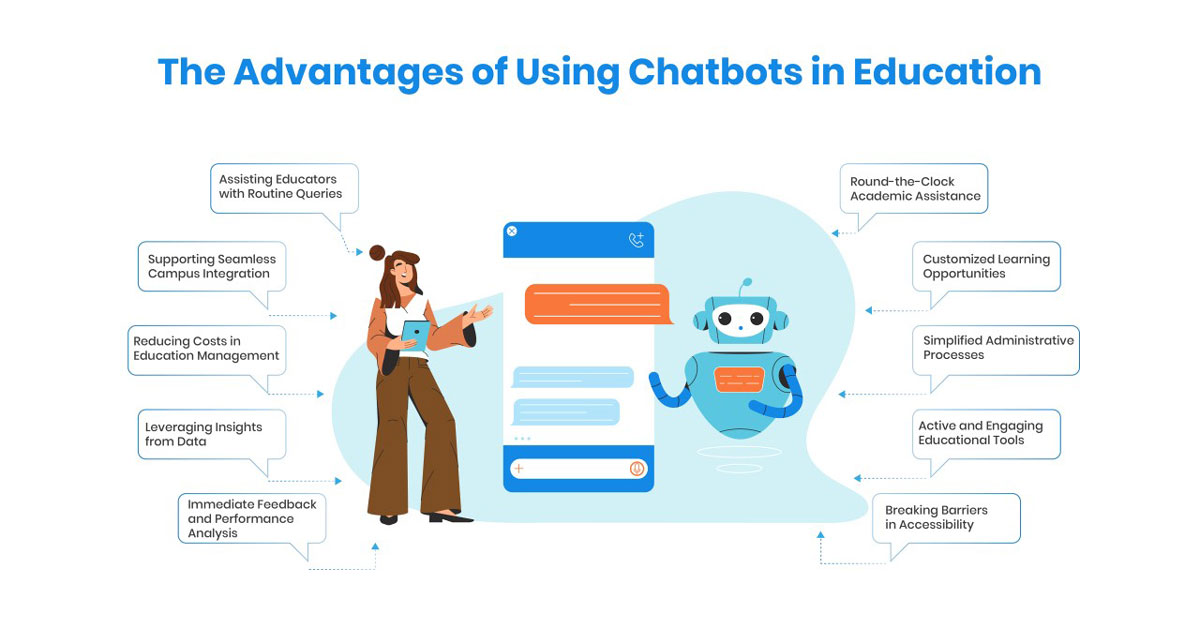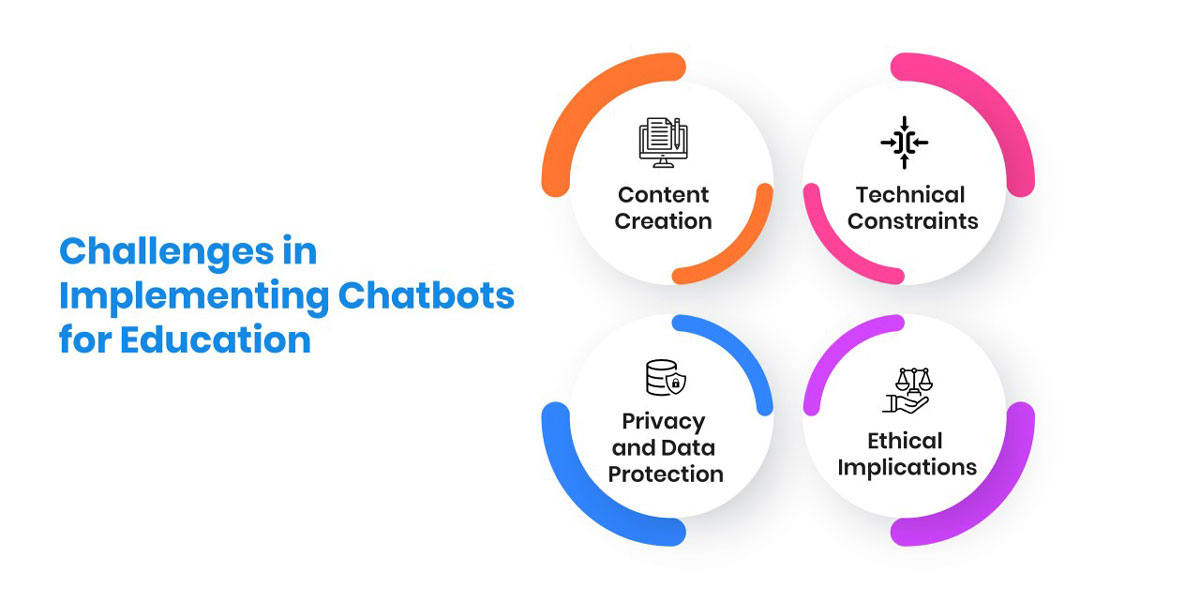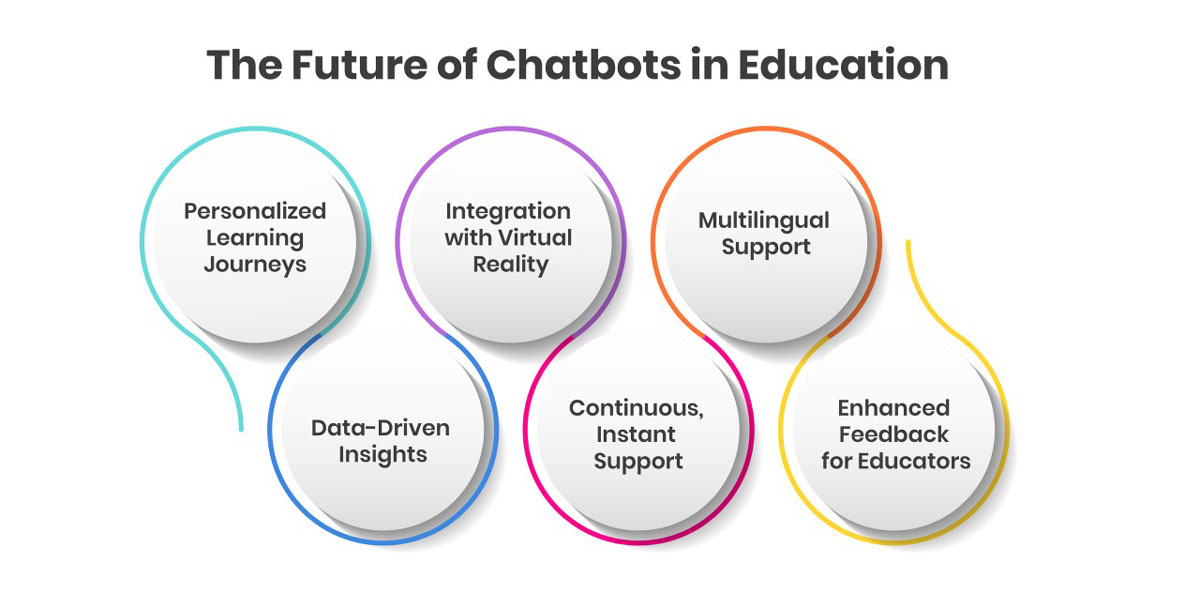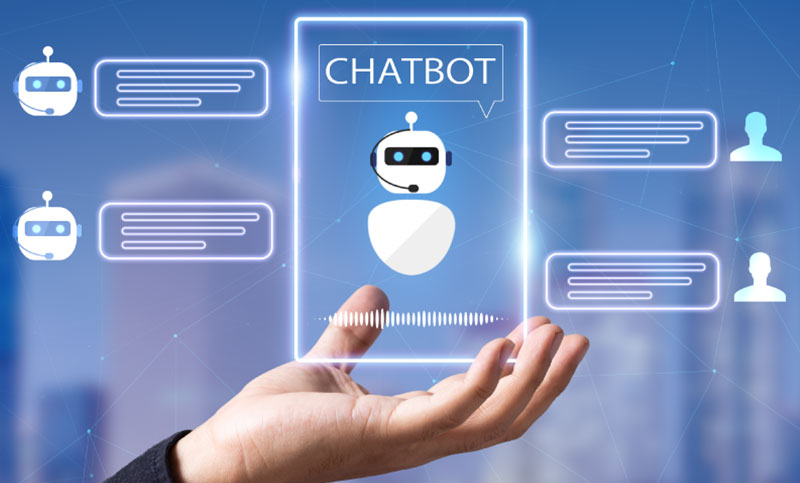Chatbots in Education: Bridging Gaps and Inspiring Growth
February 14, 2025Artificial intelligence is revolutionizing education, with chatbots emerging as vital tools to enhance learning experiences and institutional efficiency. These AI-powered virtual assistants provide real-time, personalized support to students, answering questions, simplifying concepts, and guiding them through their educational journey. By offering assistance 24/7, chatbots make learning more accessible and inclusive, bringing engagement and improving outcomes for students of all ages.
Beyond benefiting learners, chatbots streamline administrative processes in educational institutions. From managing admissions and automating repetitive tasks to collecting feedback, they enable educators and staff to focus on creativity and meaningful interactions. As a result, institutions can deliver more efficient services while improving the overall student experience. By integrating chatbot technology, the education sector is embracing a future of personalized, interactive, and accessible learning.
Transforming Education with Chatbots: A New Era of Learning and Administration
Educational chatbots are reshaping the way students, educators, and institutions interact, making learning and administrative processes more streamlined and engaging. Powered by artificial intelligence (AI), these chatbots act as virtual assistants, capable of performing tasks like answering questions, personalizing learning experiences, managing administrative duties, and guiding users through complex educational systems.
These intelligent tools cater to both academic and administrative needs. For students, chatbots provide instant assistance, whether it's clarifying doubts, guiding through assignments, or offering step-by-step solutions to challenging problems. They adapt to individual learning styles and paces, creating a more personalized educational journey.
Educators also benefit greatly, as chatbots can automate repetitive tasks such as grading, scheduling, and sharing updates. This enables teachers to focus more on meaningful interactions and creative lesson planning. Additionally, institutions leverage chatbots for efficient management of admissions, curriculum updates, alumni data retrieval, and other operational activities.
The Advantages of Using Chatbots in Education
Chatbots are revolutionizing the educational landscape and their integration into educational systems offers a variety of advantages. Take a look at the few mentioned below.

- Round-the-Clock Academic Assistance: Chatbots provide round-the-clock assistance, helping students resolve doubts, access resources, or clarify concepts at any time. This ensures uninterrupted study sessions, boosts self-paced learning, and enhances academic performance.
- Customized Learning Opportunities: By analyzing student interactions, chatbots build educational content to individual needs. They adapt dynamically, offering customized explanations, practice exercises, and resources to improve engagement and learning outcomes.
- Simplified Administrative Processes: Automating tasks like enrollment queries, scheduling, and campus information reduces staff workload. Chatbots improve response times and operational efficiency, creating a seamless administrative experience.
- Active and Engaging Educational Tools: Through gamified elements like quizzes, simulations, and problem-solving exercises, chatbots encourage active learning, enhancing student engagement and knowledge retention.
- Breaking Barriers in Accessibility: Multilingual capabilities make chatbots valuable for diverse student populations, breaking language barriers and providing inclusive support for students with disabilities or in remote areas.
- Immediate Feedback and Performance Analysis: Chatbots assess students through quizzes or exercises, providing instant feedback. This helps identify areas of improvement, enabling timely intervention for better learning outcomes.
- Leveraging Insights from Data: By analyzing student interactions, chatbots generate insights into engagement levels, learning challenges, and curriculum effectiveness, enabling institutions to improve their teaching strategies.
- Reducing Costs in Education Management: Automating repetitive tasks reduces reliance on extensive administrative staff, lowering operational costs while maintaining high-quality services for students and educators alike.
- Supporting Seamless Campus Integration: Chatbots guide new students by providing details about campus events, clubs, and facilities, developing a sense of belonging and helping them integrate seamlessly into campus life.
- Assisting Educators with Routine Queries: Chatbots handle routine student queries, allowing educators to focus on personalized teaching, creative lesson planning, and initializing meaningful discussions.
Creating an Effective Educational Chatbot: A Step-by-Step Guide
Chatbots are transforming education by offering better interactions, simplifying administrative tasks, and boosting student engagement. This guide provides educators with a clear framework to design and implement efficient chatbots in their teaching and learning environments.
- 1. Identifying Educational Objectives: The first step in creating a chatbot is understanding the unique needs of your institution. Educators must clarify the goals the chatbot will serve, whether it's for student support, content delivery, or administrative functions. Analyzing the target audience and determining the desired outcomes will ensure the chatbot aligns with educational objectives.
-
2. Selecting an Ideal Development Platform: Educators have several options when it comes to chatbot development platforms. Popular choices include:
- Bot Frameworks: Prebuilt solutions like Microsoft Bot Framework, Dialogflow, and IBM Watson provide intuitive tools for chatbot creation, including natural language processing (NLP) and seamless integration with educational tools.
- Custom Solutions: For more control over the chatbot's capabilities, educators may choose to build a custom chatbot using programming languages such as Python, JavaScript, or Java. This allows for better functionality but requires more technical expertise.
- 3. Designing Interactive Conversations: A key feature of successful educational chatbots is their ability to guide users with clear, engaging dialogues. Educators should plan for a variety of user interactions, considering the intent behind queries and predicting appropriate responses to create an intuitive user experience. Mapping out conversation paths ensures smooth, helpful exchanges.
- 4. Integrating with Educational Systems: To unlock the full potential of chatbots, it’s essential to integrate them with learning management systems (LMS) or other educational platforms. This enables the chatbot to access course resources, grades, and assignments, delivering more personalized support to students by offering relevant information when needed.
- 5. Implementing Advanced Language Capabilities: Natural language processing (NLP) allows chatbots to understand and respond naturally to student queries. By incorporating techniques like intent identification, entity recognition, and sentiment analysis, educators can create chatbots capable of meaningful, context-aware interactions that feel more human-like.
- 6. Leveraging Machine Learning for Continuous Improvement: Machine learning enables chatbots to evolve and improve over time. By analyzing past interactions, the chatbot learns to provide more accurate and relevant responses. Educators can refine the system by training the chatbot with large sets of educational content, ensuring it becomes more adept at handling various queries.
- 7. Ensuring Robust Data Security and Privacy: Given that educational chatbots handle sensitive student data, ensuring the security and privacy of this information is paramount. Strong encryption, access controls, and regular audits should be put in place to protect user data, while also complying with privacy regulations to maintain trust and legal compliance.
- 8. Testing, Refining, and Ongoing Support: Before deployment, educators must rigorously test the chatbot to ensure it functions as intended. User testing, beta trials, and collecting feedback are critical steps in identifying areas for improvement. Continuous monitoring and updates are necessary to keep the chatbot relevant and effective for students.
Challenges and Key Considerations in Implementing Chatbots for Education
While chatbots present numerous advantages for the education sector, their adoption comes with several challenges that need careful consideration:

- Content Creation: For chatbots to be effective, they require a rich and well-curated knowledge base, along with engaging, accurate content. Without this foundation, they may struggle to provide helpful or relevant responses to users.
- Technical Constraints: As chatbots are still evolving, their ability to handle intricate or multi-layered queries remains limited. They may not always grasp the subtleties of complex conversations, which can hinder their effectiveness in addressing certain topics.
- Privacy and Data Protection: Ensuring the security of student data is a top priority. Educational institutions must ensure that the information collected by chatbots is protected and used in compliance with privacy standards, maintaining confidentiality at all times.
- Ethical Implications: The use of artificial intelligence in education brings forward ethical concerns, such as potential biases in the algorithms or an overdependence on technology, which could affect the balance between human interaction and automated systems in learning environments.
The Future of Chatbots in Education: Shaping the Future of Learning
As AI technology advances, chatbots are set to revolutionize education by transforming traditional learning methods. Here’s how the future of chatbots in education will unfold:

- Personalized Learning Journeys: AI-powered chatbots will create customized learning experiences, adapting to individual students' needs, preferences, and pace. This shift from one-size-fits-all methods will ensure more personalized and effective learning.
- Integration with Virtual Reality: By combining chatbots with virtual reality (VR), students will engage in immersive learning environments with AI-driven tutors, enhancing their understanding of complex concepts in a 3D setting.
- Multilingual Support: As education becomes more global, chatbots will support multiple languages, ensuring accessibility for students from diverse backgrounds and breaking down language barriers.
- Data-Driven Insights: Chatbot-generated data will provide valuable insights into student behavior and learning patterns, helping institutions refine teaching methods and improve engagement for better outcomes.
- Continuous, Instant Support: Chatbots will offer real-time assistance to students, helping them overcome learning obstacles quickly, ensuring continuous progress, and maintaining a smoother learning experience.
- Enhanced Feedback for Educators: AI will enable the tracking of student engagement and comprehension, allowing educators to refine teaching methods and materials for ongoing improvement.
With these advancements, chatbots will make education more accessible, efficient, and personalized, paving the way for a transformative future in learning.
Conclusion
Chatbots are no longer just a futuristic concept—they are a vital component of modern education, reshaping how students learn, educators teach, and institutions operate. Their integration into academic and administrative tasks holds the potential to revolutionize the entire educational experience by offering personalized support, enhancing accessibility, and streamlining operations. While challenges like data security and content accuracy remain, the benefits of using chatbots in education far outweigh the obstacles. As technology continues to evolve, these AI-driven tools will play a pivotal role in shaping a more dynamic, inclusive, and efficient learning environment. The future of education is undoubtedly intertwined with the growth of chatbots, marking the beginning of a new era in educational innovation.




